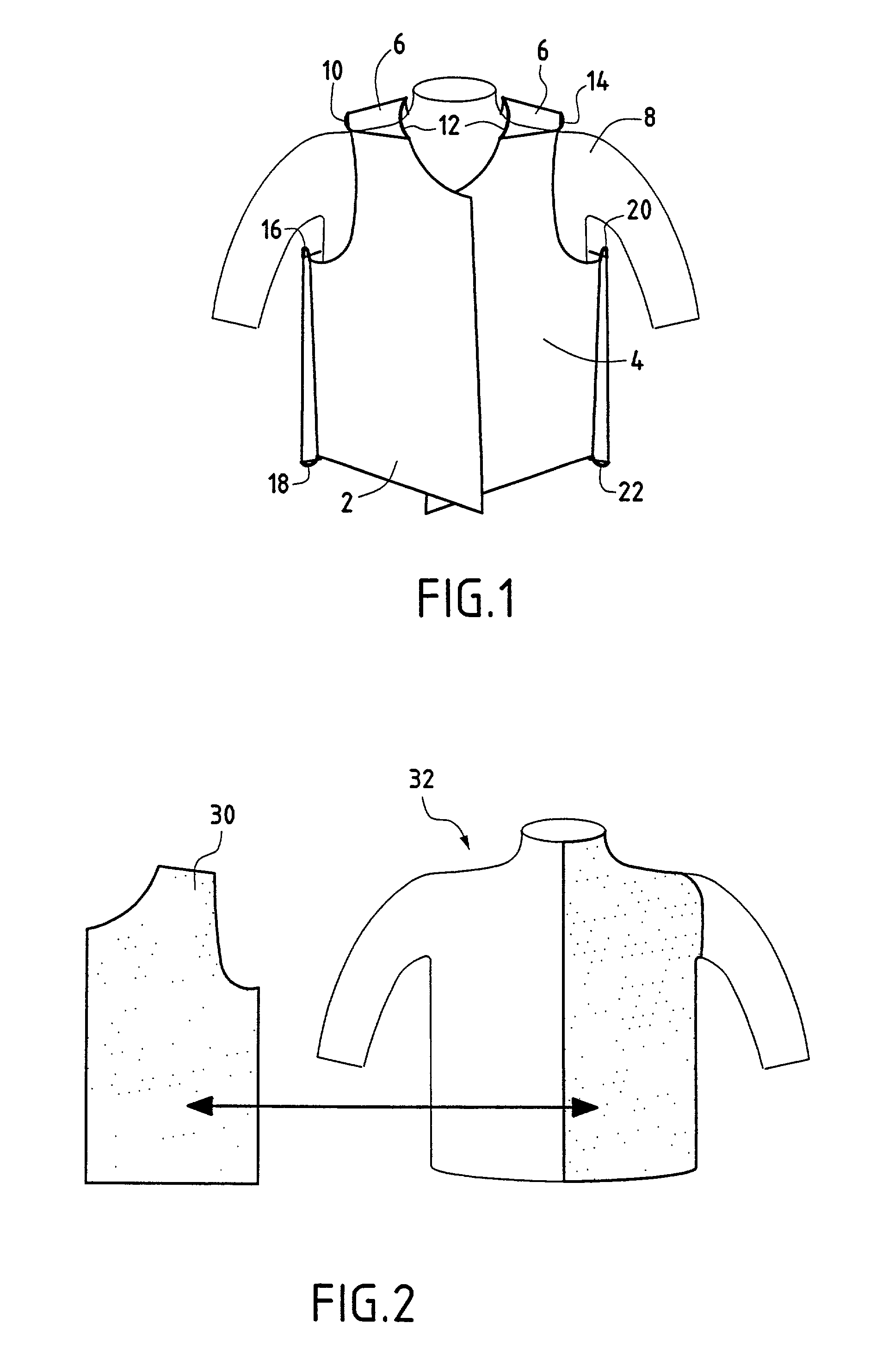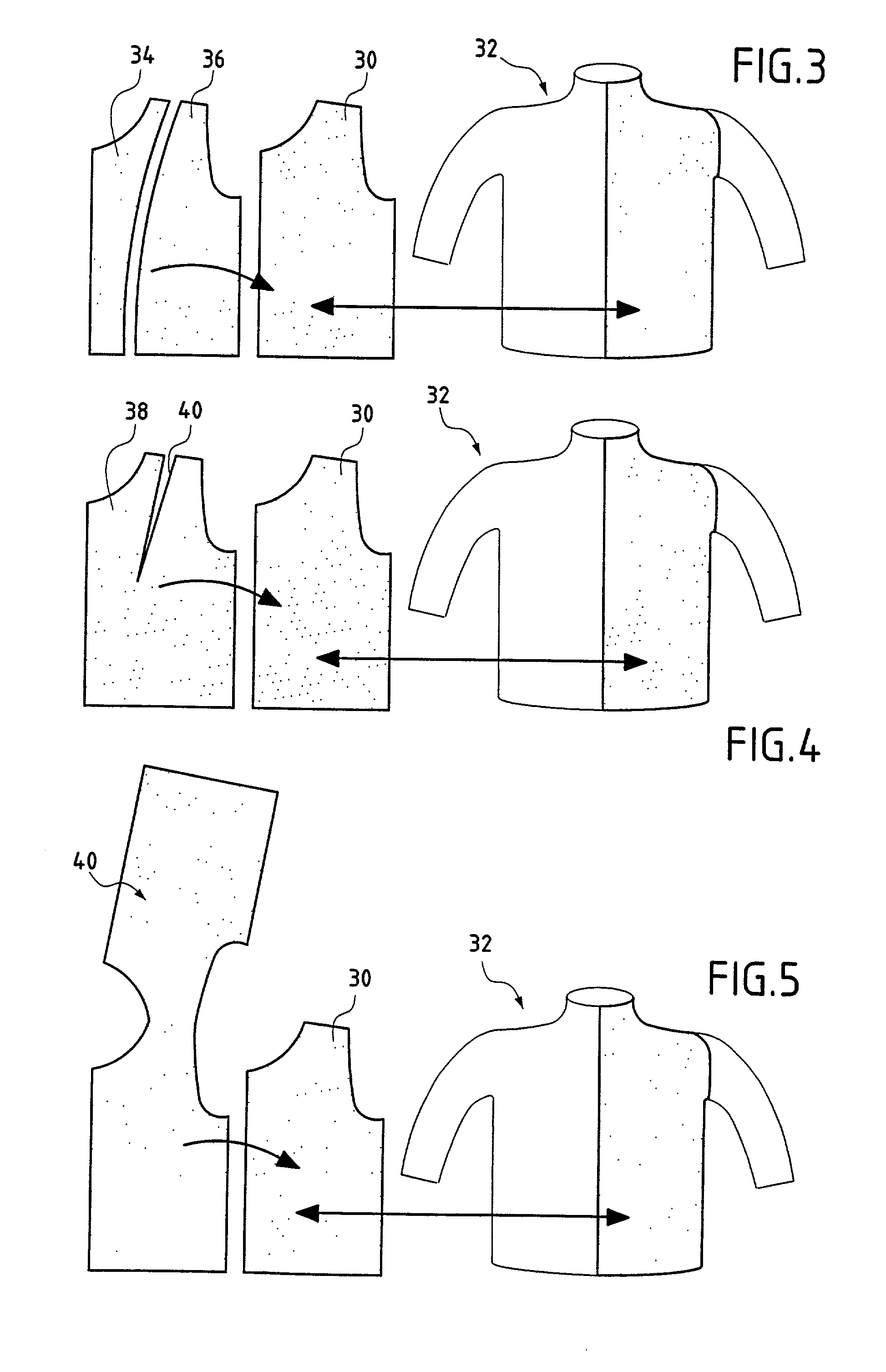Method and device for simulating and representing the dressing of a mannequin
- Summary
- Abstract
- Description
- Claims
- Application Information
AI Technical Summary
Benefits of technology
Problems solved by technology
Method used
Image
Examples
Embodiment Construction
[0078]The term “dummy” is used below to designate a computer-generated representation of the volume (or of the working portion of the volume) of a tailor's dummy or a human body. For reasons of explanation, the volume is assumed to be described by its outside surface, itself described as a triangular mesh, the vertices of the triangles of the mesh being points of said outside surface. Other representations are possible (parametric outside surface, or else volume defined by voxels (small elements of volume)).
[0079]The dummy can thus be represented by data stored in a memory of a computer or of a computer system, the data corresponding, for example to a triangular mesh, or to a parametric outside surface, or else to such voxels.
[0080]Various types of dummy may be defined, as a function of various parameters, e.g. age and / or sex of the person represented by the dummy. It is possible to provide various types of dummy and then to select a particular type of dummy. In particular, a “dummi...
PUM
 Login to View More
Login to View More Abstract
Description
Claims
Application Information
 Login to View More
Login to View More - R&D
- Intellectual Property
- Life Sciences
- Materials
- Tech Scout
- Unparalleled Data Quality
- Higher Quality Content
- 60% Fewer Hallucinations
Browse by: Latest US Patents, China's latest patents, Technical Efficacy Thesaurus, Application Domain, Technology Topic, Popular Technical Reports.
© 2025 PatSnap. All rights reserved.Legal|Privacy policy|Modern Slavery Act Transparency Statement|Sitemap|About US| Contact US: help@patsnap.com



